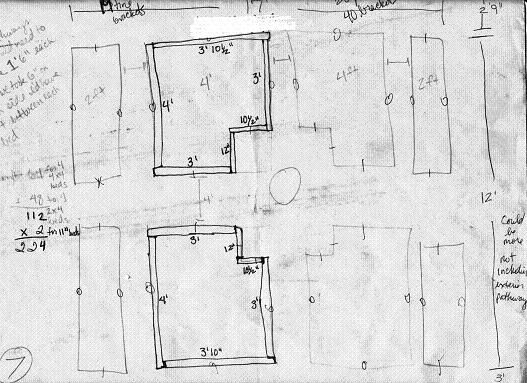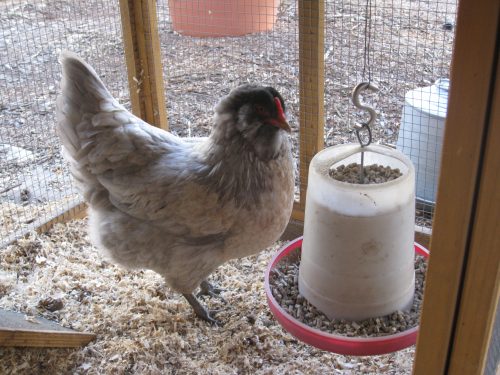You may have caught the last edition of Raised Beds Part 1, where we talked about materials for building raised beds. Now we move on to Part 2 – Design.
There are an infinite assortment of ideas in the world for raised beds. I happen to be, much to my husband’s chagrin, hopelessly influenced by formal English gardens with closely trimmed boxwood hedges and topiaries and espaliered fig trees on the wall. We have a ranch house, so that kind of formality doesn’t fly in our back yard. However, I really, really wanted something that made my heart sing every time I stepped into the garden. So I cracked open one of my favorite gardening coffee table books and started fishing for ideas.
In the back of the book, there are beautifully illustrated garden designs, including one vegetable garden layout that would make Her Royal Majesty sit up and take notice. From that idea, I began my own exploration of what I wanted my new garden to look like. On several pieces of paper, I came up with 8 different possibilities for the layout. I wanted to utilize the sun’s path to my advantage. I also wanted to add trellises on the North side of the beds for vining plants. After careful consideration of all the options, we landed on idea #7, which you can see loosely drawn below:

In this garden, I want to plant permanent crops like asparagus, artichokes, and strawberries. My other garden has always been on a system of crop rotation that doesn’t allow for permanent crops. So with this garden, I get to satisfy two needs at once – a formal looking garden with permanent crops.4 two-by-four foot beds on the perimeter, and 4 four-by-four foot beds in the center, each with a corner cut out to give me that formal garden feeling without creating too much pomp and circumstance. In the center will be either a water fountain or some kind of tiered bed for strawberries – I haven’t decided yet.
In order to satisfy both aesthetic and practicality, I always make my raised beds at least 10 inches high with boards that are 2 inches thick. They’re just more sturdy, they last longer, and they have more of a presence, which I like. With the materials we chose – Trex Decking – the boards that are 2 inches thick are only available in 6 inch widths. So we would need to double-stack our raised beds to get a height of 12 inches.
Another reason for the tall beds is because we wanted to install chicken wire on the bottom of each bed in case we discover later on that a family of gophers lives directly below us. Also, since we harvest parsnips that are often a foot long, we wanted to make sure there was plenty of growing room for root vegetables.
After taking all these needs and desires into consideration, we felt ready to go forward with building. But that’s next time… Stay tuned!
Do you have a garden project going on right now? If so, share it here.



